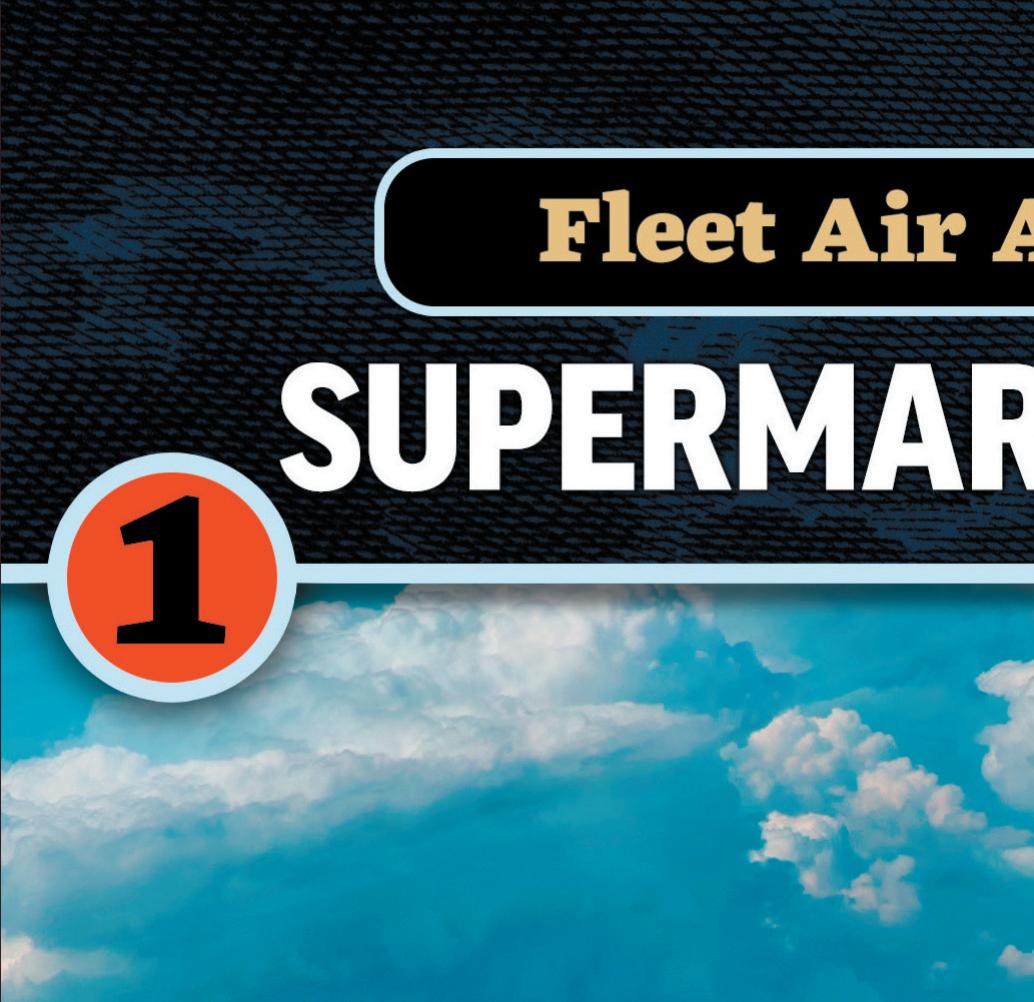
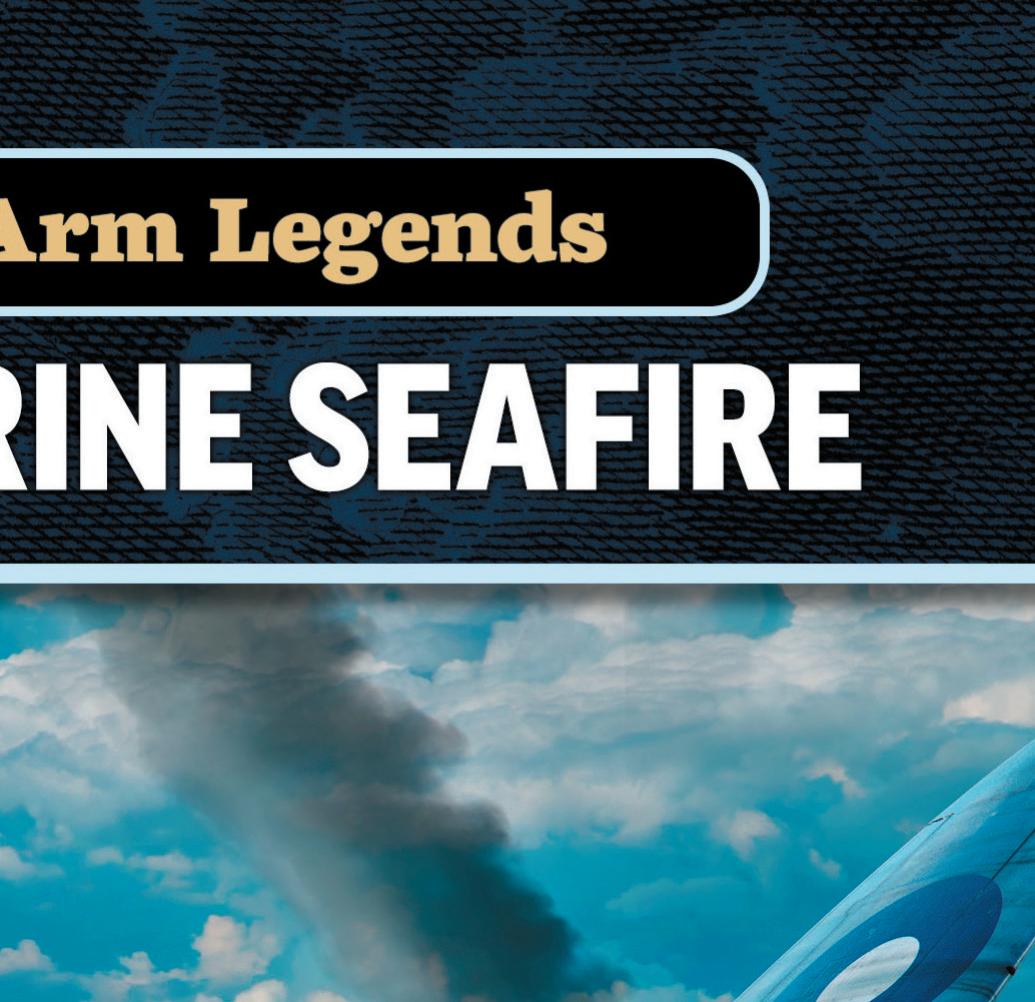
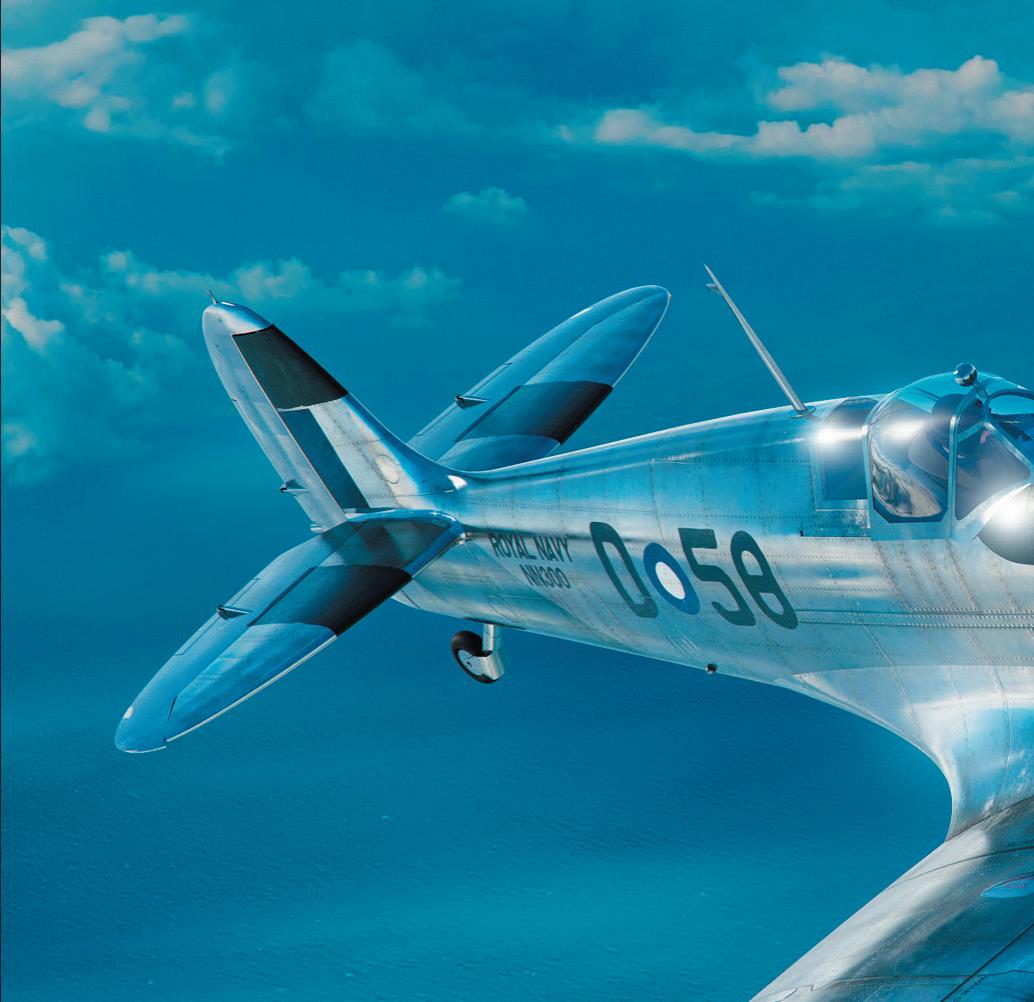
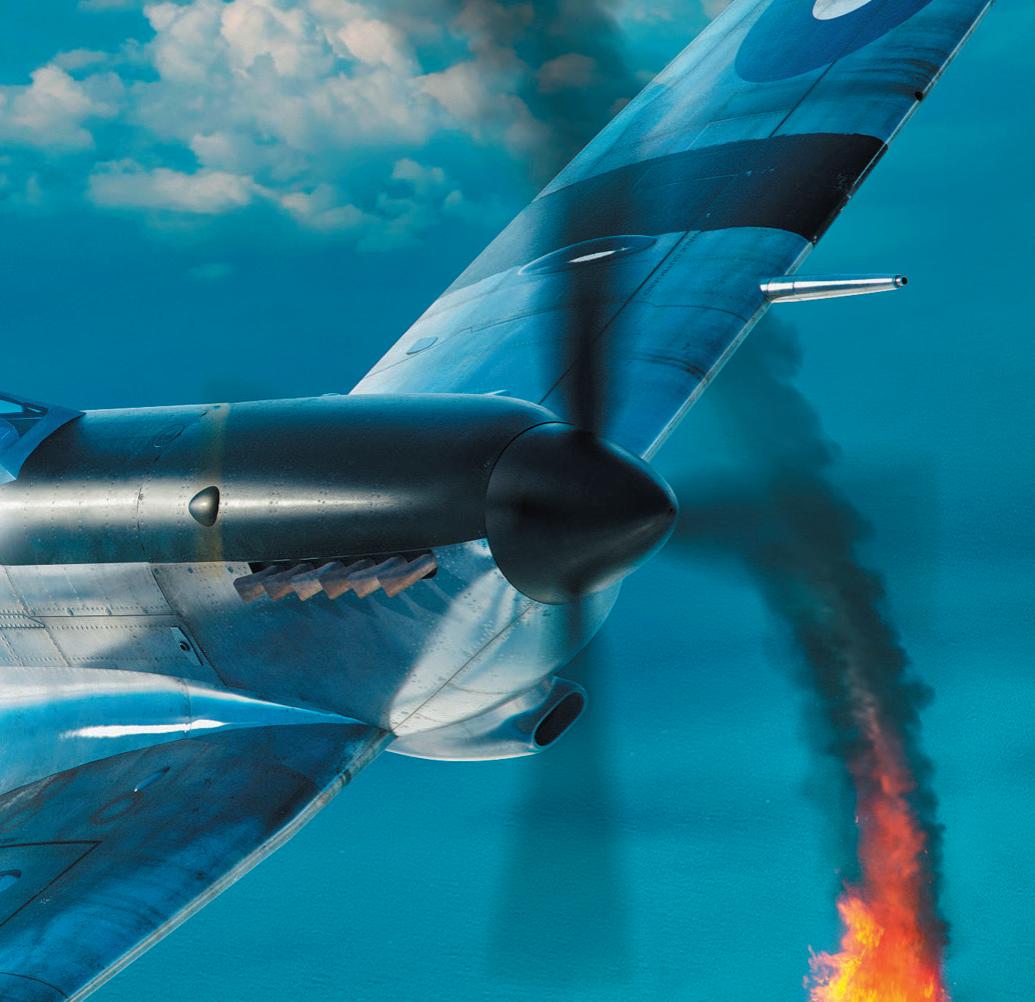
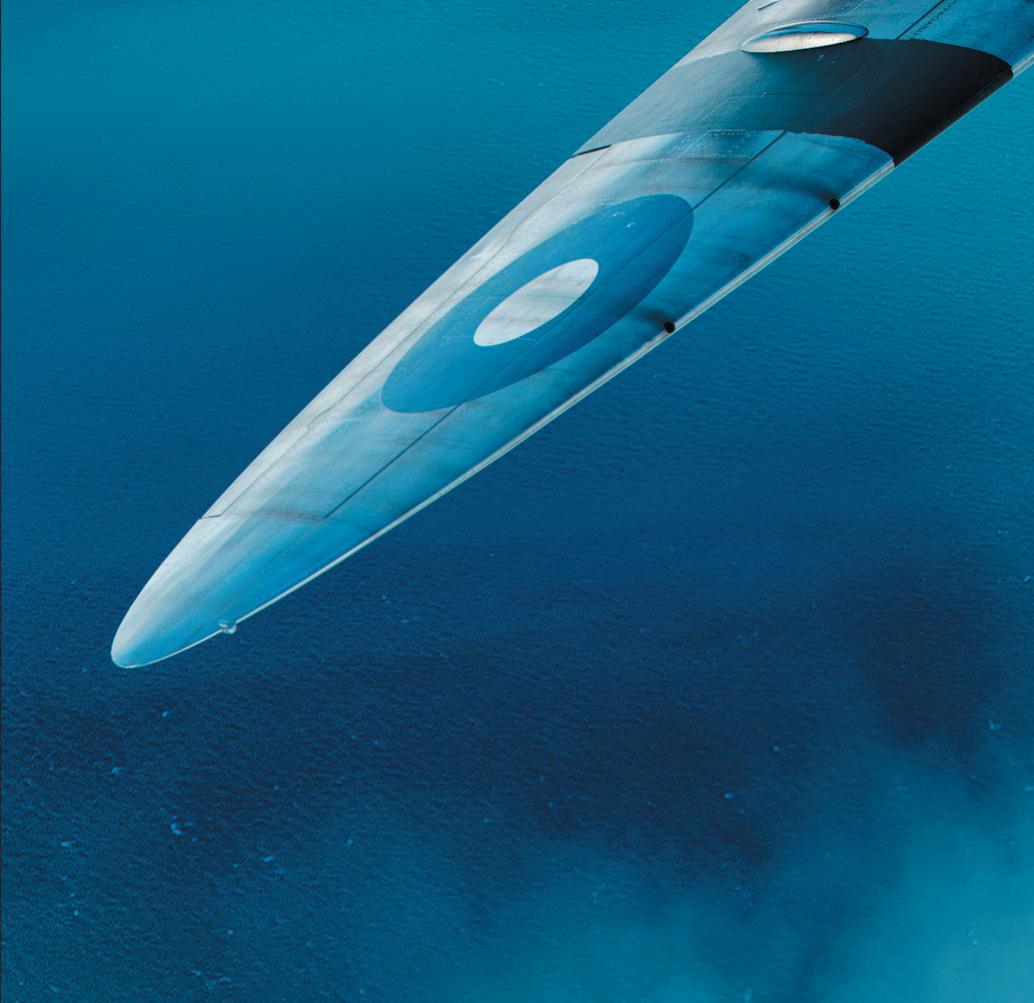
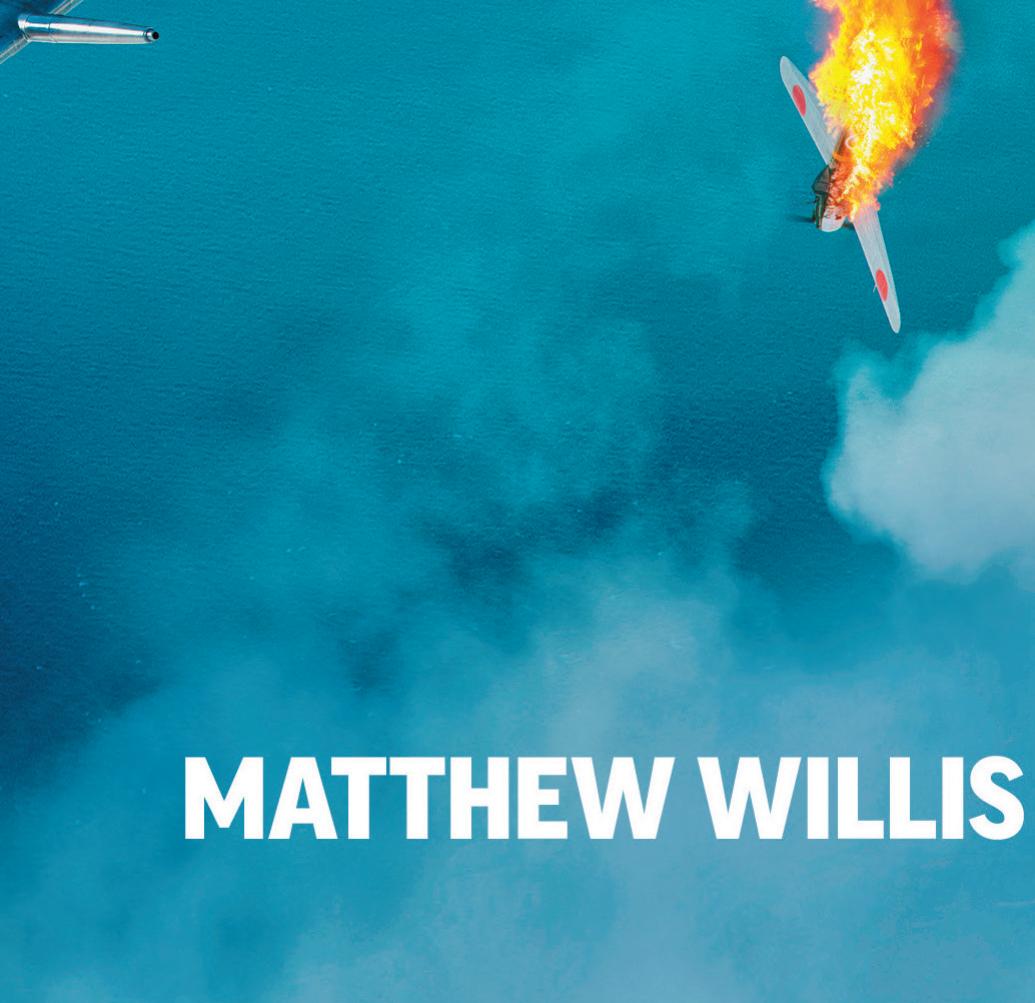









Profound thanks to Nick Stroud, Gordon Penney and Lieutenant Commander Chris Götke
Published in 2020 by Tempest Books an imprint of Mortons Books Ltd. Media Centre Morton Way Horncastle LN9 6JR www.mortonsbooks.co.uk
Copyright ©Tempest Books, 2020
All rights reserved. No part of this publication may be reproduced or transmitted in any form or by any means, electronic or mechanical including photocopying, recording, or any information storage retrieval system without prior permission in writing from the publisher.
ISBN 978-1-911658-29-0
The right of Matthew Willis to be identified as the author of this work has been asserted in accordance with the Copyright, Designs and Patents Act 1988.
All images are courtesy the author unless otherwise stated.
Typeset by XXX
Printed and bound by XXX

InSeptember 1941, the Chief of Naval Air Services (CNAS), Admiral Lumley Lyster,wrote amemorandum outlining the importance ofsingle-seat fighters to the Royal Navy.
The situation was dire. Lyster declared that four of the RN’slarge fleet aircraft carriers had been “ENTIRELYDEPRIVED OF FIGHTER PROTECTION.” The Fleet Air Arm was running out of fighters. The few it did have were inadequate. The service was fighting in the Atlantic, the North Sea and the Mediterranean. It would soon face Japan, as well as Germany and Italy,with its armoury half-empty.
The situation had not arisen suddenly.Prewar misconceptions, supplies from the US slowing to atrickle, the priorities of the Air Ministry,politics, and delays to new British designs created a‘perfect storm’ in thesupply of equipment. By late 1941, the Fleet Air Arm was reliant on afew hundred obsolescent Sea Hurricanes, and the Grumman Martlet which was more suitable but was increasingly prioritised for the US Navy.New British designs would not be availableuntil at least 1943.
Furthermore, operations in Norway and the Mediterranean had showed that pre-war
assumptions on which the service had been equipped were utterly false. In 1940 and 1941 the small number of low-performance two-seat fighters available were completely insufficient to protect the fleet from air attack.
Soon after Lyster issued his plea, the Prime Minister,Winston Churchill, visited the new armoured carrier HMS Indomitable.Hewas dismayed to see that only a few Sea Hurricane Is would be its fighter strength and demanded that henceforth, “Only the finest aeroplanes that can do the work go into all aircraft-carriers,” especially “the highest class fighters.”
But the following month, the US Navy refused any more Martlets for the RN after existing orders were fulfilled. The Fleet Air Arm’s fighter position was now critical. With further urging from Churchill, the RAF grudgingly transferred 200 more fighters. These would not be more Hurricanes: the pride of Fighter Command, the Supermarine Spitfire, was finally going to sea.
The genesis of the Seafire is convoluted and confused. Rather than asingle, ongoing process, two overlapping but largely unconnected programmesran concurrently in late 1939–early 1940: one for astraightforward navalisation of existing Spitfires, and another for acomprehensively redesigned aircraft, fully adapted to carrier operation.
Though the Admiralty may have approached Fairey with the idea of licence-building anaval Spitfire in 1938, the first concrete proposal did not arise until late the following year.The Admiralty’sAdvisory Committee on Aircraft examined adrawing of aproposed arrestor hook installation for aSpitfire on 27 October 1939. Soon after this, Vickers and the Admiralty began working on the problem of folding the Spitfire’swings for carrier stowage.
At the same time, plans for adistinctive naval Spitfire were under development. This would have had totally new wings and engine cooling layout, while the rest of the aircraft would be changed to agreaterorlesser degree. In the summer of 1939, the Air Ministry issued Specifications N.8/39 and N.9/39 for anew naval fighter,requested, according to contemporary doctrine, as aconventional twoseat fighter and aturret fighter.ByDecember 1939, wartime experience had thrown a different light on FAArequirementsso N.8/39 was revised to call for atwo-seat fighter and asingle-seat fighter,preferably to the same basic design.
For the single-seater,Supermarine turned to its tried-and-tested fighter and offered the Type 338, adesign described as a“Spitfire with aGriffon engine”,1 though it differed in numerous respects from the Spitfire then in service. This development was unsurprising, on the basis that the company had issued abrochure for aGriffon Spitfire afew weeks before the revisions to N.8/39 were issued. Supermarine was confident that the Spitfire could handle the extra power of the Griffon, on the basis that
the one-offaircraft developed for aspeed record attempt had flown with over 2,000 hp with no handling problems. (An alternative with an even more powerful Napier Sabre was offered, though this would have required anew forward fuselage.)
The proposal was recognisable as aSpitfire, though there were significant differences in the wing. The planform was altered to increase area with greater chord thanks to greater leadingedge curvature, while reducing span by slightly squaring offthe tips (not dissimilar to the tip form on the later Seafire Mk 45–47 models). The simple dihedral of the Spitfire wing was changed to acranked ‘inverted gull’ form (as on the two-seat Type 333 designed to the original N.8/39), with the undercarriage moved out to the dihedral break, making for much shorter oleos and awider track. The radiators were relocated to aventral ‘tunnel’ beneath the fuselage. Unlike the later Seafire, the Type 338’swings folded back along the fuselage, clearly derived from the wing fold system developed for the Type 333. Supermarine had takensome pains to try to integrate the Griffon into the airframe tightly,and the axis was lowered to improve visibility forward. Had this development gone ahead in 1940, it is likely that many of the problems the Seafire later faced would not have arisen, though it would have taken longer to bring into service.
The technical merit of the naval Griffon Spitfire was praised at the tender conference on 5January 1940, but Supermarine narrowly lost out to Fairey,onthe basis that the Spitfire’s view for deck landing was judged to be poor This programme for athoroughly redesigned naval Spitfire, with much attention given to its navalisation, was now over and littleofthe design work would be of use in future projects.
But asecond route for anaval Spitfire was underway.The day before Supermarine’sN.8/39 project was rejected, Fifth Sea Lord Admiral Guy Royle held ameeting at the Admiralty
to discuss ‘Future policy for fighters’.2 It was noted that in addition to fleet defence and strike escort, the service was now expected to defend naval bases that the RAF could not cover.The Fleet Air Arm (FAA)’sown fighters had not been developed with this task in mind –they were expected never to confront highperformance, shore-based aircraft. The meeting concluded, in asection entitled ‘Spitfires or Hurricanes’, that it would be “desirable to reinforce the weapons of the Fleet Air Arm with anumber of high speed single-seater fighters of the most modern types”.3
In addition to the defence of UK naval bases, these aircraft could form amobile force to defend bases overseas, “months before such air defence was likely to be provided by the Royal Air Force”.4 With basic modification, they could even be used to supplement two-seat fighters in fleet aircraft carriers, to be “flown
offwhen attack was imminent”. Such fighters would need folding wings –abasic requirement due to the small lifts on modern carriers –but it was noted that both Hawker and Supermarine were working on folding wings. The idea of converting existing types was investigatedwith aview to putting aproposal to the Air Council –by which time the Spitfire was favoured, as only the Supermarine type was raised with the Air Ministry at the end of February 5 The Secretary noted that “the possibility of providing some 50 Spitfires with folding wings and arrester hook has already been discussed informally,” adding “My Lords [of the Admiralty] would be grateful if the Air Council could give it favourable consideration.”


Supermarine estimated that the first foldingwing Spitfires could be delivered by February 1941 with aprototype flying in five months, and the 50 aircraft delivered within 16 months, or

14 months if production was instigated directly, with no prototype.
The Air Ministry resisted. They pointed out that to provide 50 Spitfires with naval modifications to the FAAwould cost the RAF considerably more than 50 aircraft,due to the additional time and effort it would take to tool up for the modifications. Supermarine believedthat building 50 navalised Spitfires would cost the production of 75 standard Spitfires,6 but the Air Ministry grossly exaggerated the effect, suggesting it would rob the RAF of 200 Spitfires. On this basis, the proposal was refused in March, the decision supported by Winston Churchill (then First Lord of the Admiralty), who felt that fighters for naval base defence should not be “of the latest type.”
The FAAwas left to defend Scapa with obsolete Gloster Gladiators, stripped down Fairey Fulmars flown as single-seaters, and a few Grumman Martlets.
The RN still felt two-seat fighters were worth pursuing and continued to devote resources to their development, but the Norwegian campaign of April–June 1940 emphasised that the FAAcould not do without ahighperformance single-seater.The opening of Mediterranean hostilities shortly afterwards

confirmed this. “The low speeds of the twoseater fighters hitherto embarked on all aircraft carriers have been insufficient to enable them to deal effectively with attacks pressed home on the mother ship,” the Joint StaffMission concluded. “Our aircraft carriers are often required to operate within range of shorebased aircraft; and it will be imperative to arm these carriers with single-seater as well as twoseater fighters.”7
New carriers were nearing completion and the FAAhad ambitious plans for expansion. These would come to nothing if it was impossible to protect the new ships from air attack. The answer seemed at first to come in the rotund shape of the Grumman G-36 Martlet,but deliveries of these aircraft could not come fast enough. The RAF reluctantly agreed to transfer Hawker Hurricanes for naval/maritime use, both as a conventional carrier fighter and as acatapultlaunched interceptor for convoy defence.It proved that ahigh-performance fighter not designed for naval use could still provide the fleet with vital protection against shadowers and bombing attack. The Admiralty regarded the Sea Hurricane Mk Ias“obsolescent”before it entered service,8 and believed that the RAF would not transfer more than five squadrons’ worth of aircraft.
Grumman was then fulfilling an order for 240 folding-wing Martlets, due to be completed in August 1942. The Admiralty implored the US Navy to allow another 100 to be delivered but was refused.9 This left the FAAinan untenable position.
In September,Prime Minister Winston Churchill visited HMS Indomitable and was dismayed to learn that her fighter squadrons were to be equipped with the Sea Hurricane Mk Ib. The next month he finally backed the Admiralty’srequests for Spitfires.
Work on the aircraft that would become the Seafire progressed quickly from this point. Supermarine had already undertaken studies into ‘navalising’ the Spitfire, but further assistance was given by the Admiraltywith a set of plans for the AmericanVought SB2A’s arrester hook, and designs for ship-plane arrester gear that the Royal Aircraft Establishment (RAE) had developed. Supermarine felt that the addition of an arrester hook would be relatively straightforward, but catapult spools for accelerated launching would require more alteration to theairframe.
With the aid of a‘rocket’ fromthe Prime Minister,the first Spitfires were delivered to the AdmiraltyinJanuary 1942, with more following over the succeeding months. The first transfer was for 48 modern aircraft, less than aquarter of the quantity the Admiralty had asked for,plus some additional Mk Is purely for training purposes.
Most of these 48 Spitfire Mk Vb were delivered to Air Service Training (AST) at Hamble for conversion to naval standards, with ahandful set aside for testing the aircraft’s ‘navalisation’. So hurried was the procurement that the trialling of modifications was carried out concurrentlywith AST applying them to ‘production’ aircraft.
During this period, the aircraft became known as the ‘Seafire’. Aconvention for naval adaptations of land-based types was to add the prefix‘Sea’, although this was arelatively new custom and not part of official naming policy.Freda Clifton, wife of Alan, one of the design team, suggested aportmanteau
of ‘Sea’ and ‘Spitfire’ to avoid what would have been amouthful.10
One of the first machines, AD371, was allocated to the RAE Farnborough in February 1941 after being converted at Vickers Armstrong, Eastleigh, with hook, catapult spooks and local strengthening. This aircraft would effectively serve as the prototype Seafire Mk II.
Another of the initialtransfer of RAF Spitfires, BL676 (a presentation aircraft named Bondowoso paidfor by the Dutch East Indies Spitfire Fund) was navalised with ahook and catapult spools. In this state, Lieutenant-Commander H.P.Bramwell, the officer commanding 778 Squadron, the Naval Service Trials Unit at Arbroath, used the aircraft to practise Aerodrome Dummy Deck Landings (ADDLs) in late 1941. Sources differ as to when Bramwell made the first actual carrier landing with this aircraft, but it was either in Christmas week of 194111 or the first twoweeks of 194212 –the most likely date is 10 January.Bramwell made 12 landings and 11 take-offs, four accelerated and seven free, on HMS Illustrious 13
Bondowoso was modified further,with more standard naval equipment added, and atropical filter,from January to March. At around this time it was re-serialledMB328, to be the first of all Seafires, in the serial block MB328-MB375. Confusingly,that serial block was for Seafire Mk Ib aircraft (this variant designated the Type 340 under Supermarine’sin-house numbering system) but MB328 had at least some characteristics of the Mk II, such as catapult spools, and was described as both a‘Mk IIn’ and ‘MkIb’ in the same A&AEE report.14
Much thought was given to the integration of the arrestor hook, and the solution arrived at was unusual. In most aircraft, the V-frame hook sat in awell recessed into the underside of the fuselage skin. With theSeafire, asection of the outer skin was attached to the V-frame itself, so when it was retracted, the frame was flush with the fuselage, and only the tip of the hook itself protruded. Photographs of BL676 seem to suggest that acover or fairing was fitted over the hook when in flight, as the appearanceisof atriangular ‘wedge’ with only the back of the
hook itself visible. No other Seafire is thought to have had thisarrangement.
To help counteract the weight aft of the V-frame, a27-lb weight was attached to the engine bearer on each side. After modification, BL676/MB328 was allocated to the Aeroplane and Armament Experimental Establishment (A&AEE) at Boscombe Down. Over 4–6 April, brief trials of the aircraft’shandling and fuel system took place, as well as the performance of radio equipment. The establishment noted that BL676 was fitted with a“tropical type of air cleaner installation” in alarge chin fairing and a30-gallon jettisonable ‘slipper tank’ fitted on the underside of the centre section.15 The aircraft was tested at an all-up weight (AUW) of 6,880 lb –the standard loaded weight of a Spitfire Vb was 6,650 lb.
A6.5-lb weight was added to the elevator controls to help prevent over-rapid recovery from adive, in which state the aircraft was dived to 450 mph, the highest speed that could be reached before stick forces became excessive.
The handling trials unsurprisingly reflected that the aircraft generally behaved in much the same way as aSpitfire Mk Vb. So far, the naval modifications had not had any detrimental effect on handling or performance.
The Boscombe Down test pilots considered BL676’shandling acceptable, as long as the pilot took care to avoid excessive acceleration on recovery from dive. The Seafire required the pilot to push on the stick to keep it in the dive, so recovery tended to be automatic–the problem was that once the pilot started to pull out of the dive, the aircraft would take over and automaticallytighten up the pull-out, which if unchecked could overstress the airframe. This remained aproblem for all of the Merlinengined versions, and would get worse with each variant. The Seafire’stail surfaces had poor torsional rigidity and tended to deform in high-speed flight, leading to unexpected control response. For now,the situation was acceptable –ifpilots took care.

The only other negative was atendency to swing to left on take-off, which could be countered with rudder,and aslight tendency to yaw left in the climb with insufficient range of trim to flyfeet-off, but the A&AEE pilots felt this could be easily corrected if small modifications were made to the rudder.
Further flights were made to assess the fuel system, including the slipper tank, and no problems were found in switching between the various tanks in flight. With theslipper tank
fitted, alittle more speed was needed to perform aerobatics in the vertical plane but otherwise it did not affect handling appreciably.
Afterwards, BL676 rejoined 778 Squadron at Arbroath for deck landing service trials. In the meantime, AD371 had become available to the programme, and Bramwell used it to make afurther set of landings on HMS Illustrious, from Macrihanish. Once BL676, now MB328, returned to the Service Trials Unit, it was put to work with amore thorough series of decklanding trialson Illustrious’ssister ship, HMS Victorious,off Orkney in April–May 1942. Bramwell’scomments about the Seafire’sdecklanding characteristics were generally positive, although he had some concerns over visibility forward due to the aircraft’slong and rather wide nose.
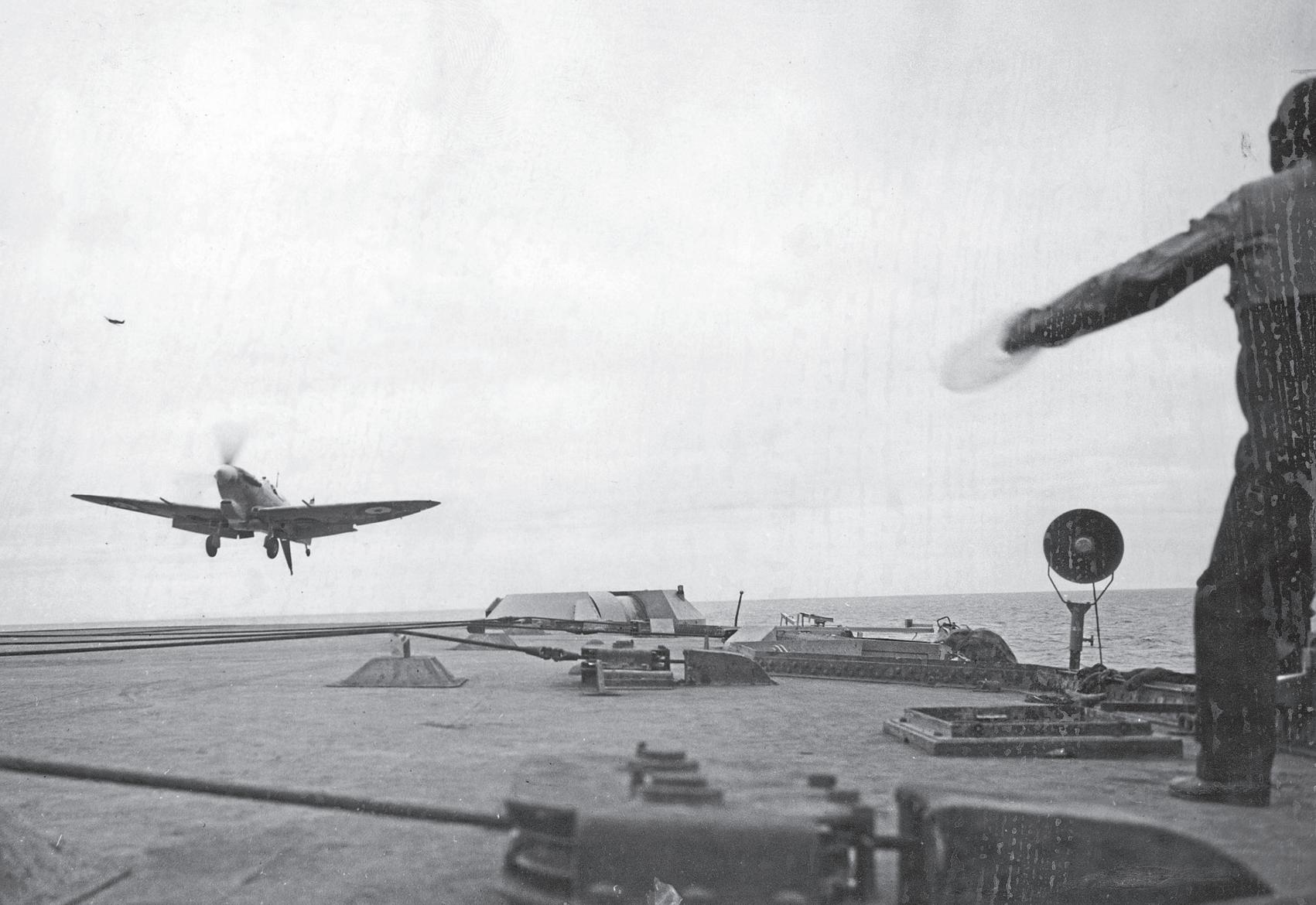
Radio equipment was an important part of the conversion to Seafire standard. The FAAused different radios to the RAF,reflecting different roles and conditions. The naval high-frequency (HF) transmitter-receiverset TR1196A and the
beacon receiver R1147, which allowed apilot to home in on his carrier when out of visual range, was tested in June 1942. This seems to have taken place with an unconverted Spitfire, AB176 (which was laterconvertedtobecome the first-production high-altitude Mk VI), although the A&AEE file lists this as aSeafire Ib. The radio equipment was easily removable complete within astandard ‘crate’, which made the set interchangeable,so it is possible that astandard Spitfire was used in the absence of aSeafire, although some alterations to the cockpit and electrics must have been carried out. The radio enabled communication over 75 miles. The beacon receiver worked via an aerial on the underside of the port wing, while the TR1196 used awire aerial akin to the standard Spitfire VHF radio.
Formal contracts for the first mark of Seafire seem to have arrived rather late, indicating the rush with which the aircraft was prepared for service. Specification IB/P1 to contractRA3664 was not issued until 19 August 1942, after most